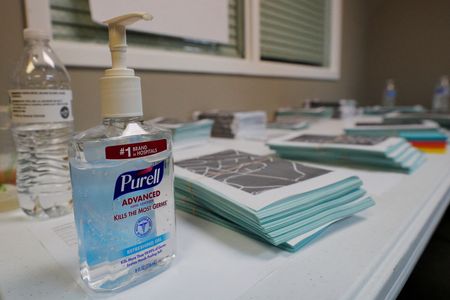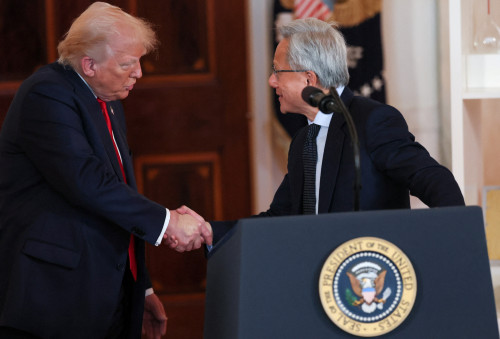By Abigail Summerville and Anirban Sen
NEW YORK (Reuters) -The end of the COVID-19 pandemic has weighed not just on demand for Purell but also on efforts to sell the maker of the hand sanitizer.
Gojo Industries Inc, which invented Purell in 1988, was hoping to be valued at more than $2 billion when it launched a process to sell itself earlier this year, according to people familiar with the matter.
SC Johnson, Ecolab Inc, Essity AB and Kimberly-Clark Corp were among the companies that participated in the auction, the sources said.
Yet after it received final offers earlier this month, the Lippman-Kanfer family that owns Gojo found all the offers undervalued the Akron, Ohio-based company, the sources added.
A deal for more than $2 billion would have valued Gojo at well over 20 times its adjusted 12-month earnings before interest, taxes, depreciation and amortization of close to $100 million, a price tag that many potential buyers found too rich, according to the sources.
It is unclear whether the family will now hold on to Gojo and try to seek a sale in the future.
A Gojo spokeswoman declined to comment on the sale process, stating only that the company is “focused on delivering its innovative, well-being solutions to more people and places in service of public health.”
Spokespeople for Ecolab and Kimberly Clark declined to comment. SC Johnson and Essity did not respond to requests for comment.
Gojo was founded in 1946, when rubber factory worker Goldie Lippman and her husband, Jerry, partnered with chemistry professor Clarence Cook to invent what became the world’s first one-step, rinse-off hand cleaner. The company expanded into skincare and invented Purell, an alcohol-based hand cleaner which dries on its own, in 1988. The company launched Purell in the consumer market in 1997.
Global revenue in the hand sanitizing industry skyrocketed from about $1 billion in 2019 to $6.3 billion in 2020, according to Statista Market Insights, as the onset of the COVID-19 pandemic fueled demand. But sales dropped to $2.95 billion in 2022 as the pandemic subsided. Statista forecasts the market to grow by 3.96% on a compounded annual basis over the next four years.
(Reporting by Abigail Summerville and Anirban Sen in New York; Editing by Leslie Adler and David Gregorio)





